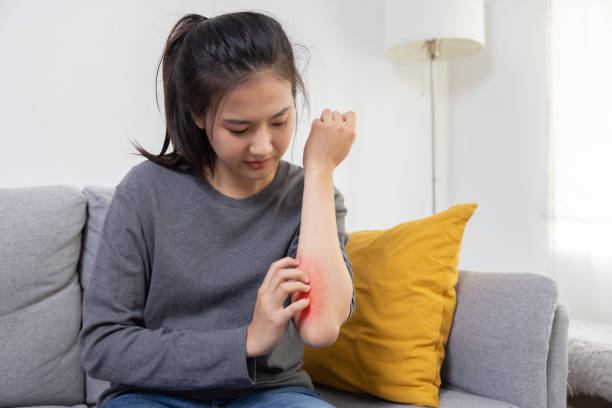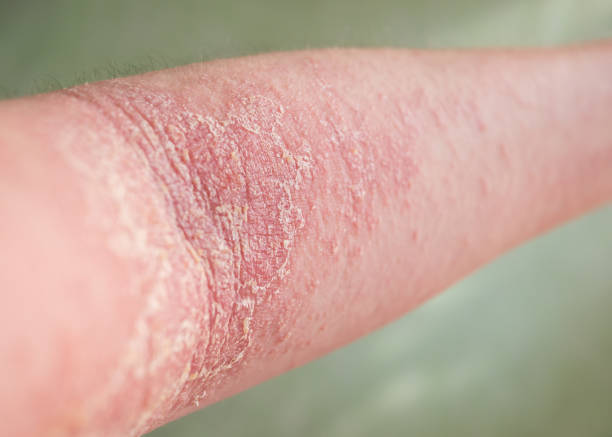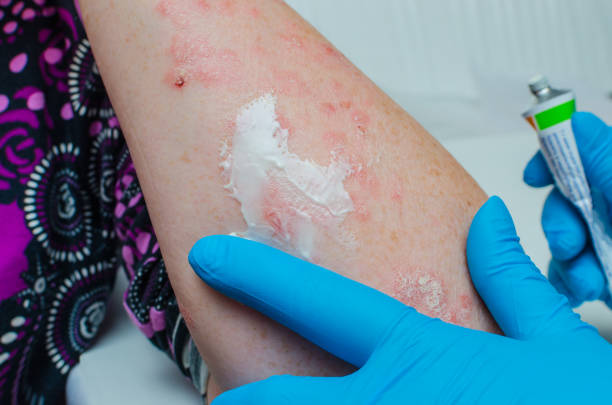Dive into the world of psoriasis, an intricate skin disorder with global impact. This brief guide unravels the contrasts between psoriasis and eczema, delves into the frenzied skin dynamics that shape its unique characteristics, and unveils its prevalence and triggers. Discover a dynamic treatment horizon, encompassing both established methods and innovative breakthroughs, providing a glimpse into a future where relief from psoriasis is a tangible reality.
Psoriasis vs. Eczema: Deciphering the Itch

Image from iStock
In the realm of skin issues, psoriasis and eczema can be easily mistaken due to their dry rash appearance. However, a closer inspection reveals distinct differences. Psoriasis triggers an overproduction of skin layers, speeding up cell turnover, while eczema results from a weakened skin barrier, often linked to genetics. Unveiling these disparities is key for accurate diagnosis and effective treatment.
Peeling Back the Layers of Psoriasis

Image from iStock
Psoriatic skin cells embark on a swift journey to the surface, taking a mere three to eight days, as opposed to the typical 20 to 30 days. This accelerated process leads to a buildup of live and dead skin cells, giving rise to the hallmark silvery scales or plaques. Moreover, psoriasis’s impact can extend beyond skin, affecting the immune system‘s response and even the joints.
Untangling Psoriasis: Prevalence and Triggers
Approximately 1% of the global population grapples with psoriasis, with around 40,000 individuals affected in Singapore alone. Debunking misconceptions, psoriasis isn’t caused by poor hygiene or dryness, and it’s neither contagious nor infectious. A blend of factors, including genetics, alcohol, smoking, stress, medications, infections, and weather, can trigger or exacerbate the condition. Genetic connections run deep, with up to 30% of psoriasis patients having family members affected.
Taking Charge of Psoriasis: Treatment Approaches

Image from iStock
While mild-to-moderate psoriasis can be tackled with phototherapy and topical treatments, more severe cases necessitate systemic medications that influence the entire body, including the immune system. This often involves pills or injections. These systemic treatments can either suppress the immune response to curb inflammation or regulate the turnover rate of skin cells. Recent oral medications like apremilast, sanctioned by the Health Sciences Authority, offer promising alternatives.
Biologics: Pinpoint Precision for Psoriasis
Derived from biological sources, biologics target specific components of the immune system that contribute to this condition. These medications efficiently rein in hyperactive immune cells and halt inflammatory signals. Classification depends on their impact on cytokines, such as IL 17, IL 12, and IL 23. Nevertheless, precision comes at a cost, with factors like expense, administration, and patient suitability shaping their prescription.
Challenges and Visions for Biologics
Despite their accuracy, biologics face obstacles due to cost and administration methods. These treatments, which involve self-injections via pre-filled vials, might not suit everyone. Patient factors, such as psoriasis severity, guide the choice between biologics and traditional oral remedies. Furthermore, the emergence of a novel oral medication from Janssen, mirroring biologics’ effects in pill form, sparks anticipation for the future.
On the Horizon: A Peek into Psoriasis Treatment
The newly introduced oral medication from Janssen holds promise as a game-changer in psoriasis treatment. Operating akin to biologics by targeting IL-23, this antagonist peptide-based drug offers convenience in pill form. Regulatory approvals stand between this innovation and widespread accessibility. Patients can anticipate a new treatment option, pending regulatory nods.
ALSO READ
Baby Eczema: What You Need to Know About Tending to Baby’s Sensitive Skin
4 Common Skin Concerns During And After Pregnancy and How To Treat Them Effectively
Best Dermatologist Singapore: Affordable and Trusted Skin Experts